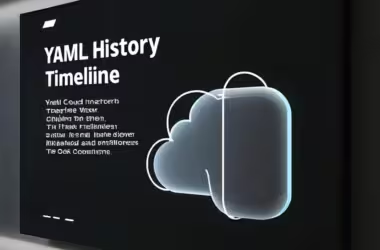In the world of software development, connecting systems is key. Using API design best practices is crucial for seamless integration. Well-designed APIs make sure different systems talk smoothly, keep data safe, and work fast.
Good API design means using clear names, managing versions, and following RESTful rules. It also means having good docs, strong login checks, and controlling data flow. We use JSON for data, make errors clear, and update in real-time. We also test a lot and plan for API changes.
Key Takeaways
- Using API design best practices is vital for seamless system integration.
- Clear names make APIs easier to use.
- Good version control helps with upgrades.
- Clear docs help developers and reduce mistakes.
- Strong security keeps data safe.
- JSON helps systems work together.
- Testing and updates make APIs better over time.
Understanding API Design Patterns
API design patterns are crucial for developers who want to build scalable, maintainable systems. These patterns make APIs work well across different programming languages and platforms. This greatly improves how developers experience them.
Importance of API Design Patterns
API design patterns are very important. Using these patterns helps developers manage API versioning and monitoring well. They create a strong and dependable API system. This is key for smooth data sharing and safety. Getting to know these patterns makes handling changes easier.
Types of API Design Patterns
There are several API design patterns, each serving different needs:
- REST API: Known for simple, stateless communication. REST APIs are popular because they work well with HTTP methods.
- SOAP API: Uses XML for better security and reliability. It’s great for finance and big business apps.
- GraphQL: A Facebook creation, allowing clients to ask for specific data. It’s good for quick data exchanges.
Knowing these patterns helps in providing better data handling and API use.
RESTful API Design
Getting the hang of RESTful API design is key for developers. It helps in creating scalable and easy-to-maintain web services. RESTful APIs follow REST principles, focusing on keeping things simple and using web protocols.
Principles of RESTful APIs
Representational State Transfer (REST) is the backbone of RESTful APIs. They rely on stateless communication. With standard HTTP methods like GET, POST, PUT, and DELETE, these APIs offer predictable and smooth interactions. Being stateless, each client request must have all the info needed, which makes the system strong and able to grow.
Advantages and Use Cases
RESTful APIs bring many benefits. They’re easy to use, can grow as needed, and work well with many technologies. They use standard HTTP methods and have a predictable setup. This makes them easy for developers to work with. Plus, having good API Documentation helps speed up development and makes it easier for new developers to join in.
These APIs fit many uses, from social networks to content management. Their simplicity and ability to scale make them great for dealing with lots of users.
SOAP API Design
SOAP API is well-known for being stable and secure. It’s perfect for financial services and areas where safety is key. The system uses XML messaging, making it compatible across different platforms.
The SOAP API is known for its strict rules, promoting data integrity and reliability. Here’s what makes it stand out:
- Envelope – This helps keep the message structure in order and the data tidy.
- Encoding rules – These rules explain how data is formatted for messaging.
- Conventions – They set the steps for calls and responses, making interactions predictable.
When it comes to reliability, the SOAP API shines with its messaging protocols. They make sure messages get through successfully. It works well over HTTP, SMTP, and other protocols, adapting smoothly to different networks.
Financial services gain a lot from SOAP API’s strong security features. WS-Security, for example, adds important layers of confidentiality. This makes every transaction and data exchange both safe and reliable from unwanted access.
GraphQL API Design
GraphQL has changed how we develop APIs. It offers flexibility and efficiency unlike other APIs. With a GraphQL API, clients can get just the data they need. This means they fetch data more efficiently. This makes client-server interaction better by reducing unnecessary data fetching.
Flexibility and Efficiency of GraphQL
Facebook developed GraphQL for managing complex data. It lets developers request specific data all at once. Real-time updates are a big advantage, too. For instance, with GraphQL, clients can get updates instantly. This makes it great for apps that need live data.
GraphQL Use Cases
GraphQL is not just for fetching data. Companies like GitHub and Shopify use it for building advanced apps. It improves performance and makes user experiences smoother. Its efficiency in fetching data is perfect for handling complex data needs quickly and reliably.
Microservices Architecture
Microservices architecture is about creating an application with many small, separate services. Each service talks to others using well-defined APIs. This brings flexibility and speed. Teams can work on, launch, and adjust parts on their own. This makes it easier to keep up with changes.
The big win of microservices architecture is horizontal scaling. Instead of making a single system bigger, you add more service instances. This approach is key for keeping applications running smoothly and reliably.
Using an API Gateway pattern makes microservices even better. It acts as one place for all client requests, hiding the complex parts of the backend. This method is good for managing lots of services, balancing traffic, and taking care of security and speed limits.
The flexibility and horizontal scaling of microservices make for a powerful way to build, grow, and adapt applications. This approach answers the shifting needs of the tech world perfectly.
API Gateway Pattern
The API Gateway pattern is crucial in today’s API architecture. It serves as the single entry for API calls to different microservices. This central system makes managing traffic, handling requests, and service coordination simpler. Thanks to an API Gateway, developers can manage authentication and routing in one place. This makes combining many services both smoother and safer.
One major plus of using an API Gateway is better traffic control. All incoming requests go through one gateway. This lets organizations keep traffic in check easily. It helps make sure APIs perform well and can handle the load, leading to a stable and dependable API setup.
API Gateways also improve service orchestration. They send requests to the right microservices. This stops services from getting too many requests and keeps the app running well. Being able to manage this keeps the user experience fast and smooth across different platforms.
In short, going for an API Gateway is key for businesses with complex API needs. It centralizes handling service requests and boosts the system’s overall strength and stability.
Choosing the Right API Design Patterns
In today’s software development world, picking the right API design patterns is key. It affects how flexible your API is and how it can grow over time. Making sure your choice matches your project’s goals and limits is critical.
Evaluating Project Requirements
First, you need to understand what your project needs. You should consider:
- Use case scenarios
- Expected traffic volume
- Flexibility and adaptability of the API
- Client capabilities and requirements
- Statefulness and session management
Looking closely at these things helps pick a pattern that’s ready for now and the future.
Team Expertise and Skills
Your developers’ knowledge deeply affects which API design patterns you choose. If they know RESTful APIs, GraphQL, or SOAP well, they can make your API better. It’s also crucial that the API works smoothly with other systems.
Knowing your team’s skills in different designs helps choose one that’s easy to work with and good for the long run. If your team knows their stuff, they can use resources wisely and handle data in real-time well.
Choosing a pattern that fits your team’s strengths is smart. It makes your project more scalable and supports good development practices.
Security in API Design
When creating APIs, making sure they’re secure is very important. Using authentication mechanisms such as API keys, tokens, or OAuth is key. These help verify who is accessing the API, reducing the risk of unauthorized use.
Data encryption is also crucial. Encrypting data sent between client and server ensures it stays private. Strong encryption keeps sensitive info safe from hackers, protecting personal and financial details.
Following API compliance standards matters a lot too. It means your API meets regulations like GDPR, HIPAA, or PCI-DSS. Meeting these standards not only keeps users safe but also builds trust in your API services.
Maintaining a secure API involves regular checks for weaknesses and conducting security audits. Being proactive in these practices helps find and fix security issues early. This makes your API more secure overall.
Effective API Documentation
API documentation is crucial for easy use, improving the developer experience. It helps in discovering APIs better. A well-documented API acts as a clear guide. It shows how to use various features correctly.
Elements of Good API Documentation
Great API documentation has key elements. It must cover all endpoints, parameters, and responses in detail. It should be clear so that new developers can understand easily. Examples help users see how the API works.
It’s also important to include error handling, authentication, and usage limits. These guidelines make development smoother.
Tools for API Documentation
Many API documentation tools make creating and updating documentation easier. Postman and Swagger are popular among developers. Postman is great for designing, testing, and documenting APIs. Swagger helps create interactive documentation from API specs.
Using these tools, developers can make their APIs easy to use and find. This encourages more people to adopt and integrate them.
Conclusion
Well-crafted API design patterns do more than just help systems work together. They make it easy for different software systems to collaborate smoothly. Following the best practices in API design is key. It assures safety, boosts the experience for developers, and makes data exchange efficient. These practices help build strong, easy-to-maintain APIs. They are important for the software’s health and its ability to grow.
It’s also important to have a good plan for API evolution. This means keeping an eye on how the API performs, to make sure it keeps up with new tech and user needs. Working together with other developers can lead to new ideas and solve problems faster. Having strong teamwork and getting regular feedback helps make APIs better and stay useful.
In short, creating and evolving APIs wisely is key to good software engineering. If organizations focus on API safety, use performance metrics, and work together, they can build strong APIs. These APIs will not only work well now but can also adjust to future challenges. Continually improving these strategies ensures that APIs will succeed and work well with others for a long time.






